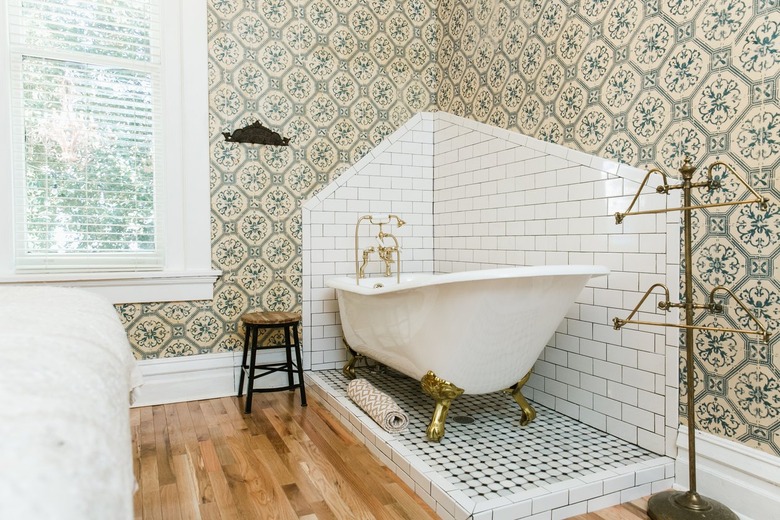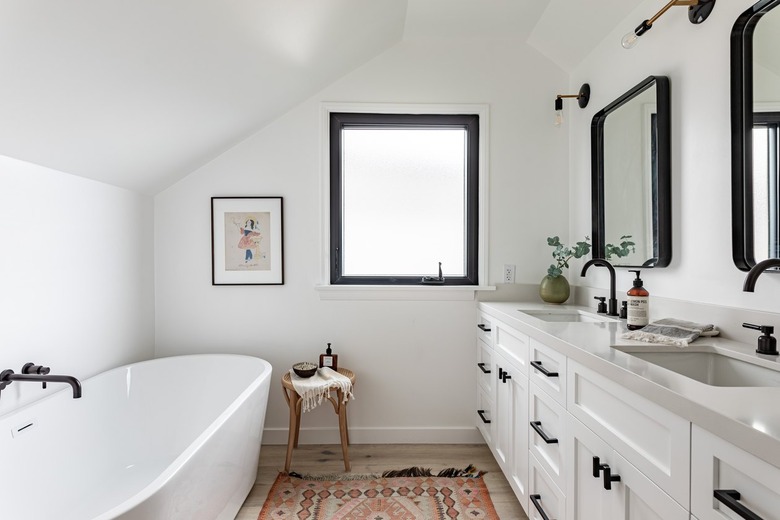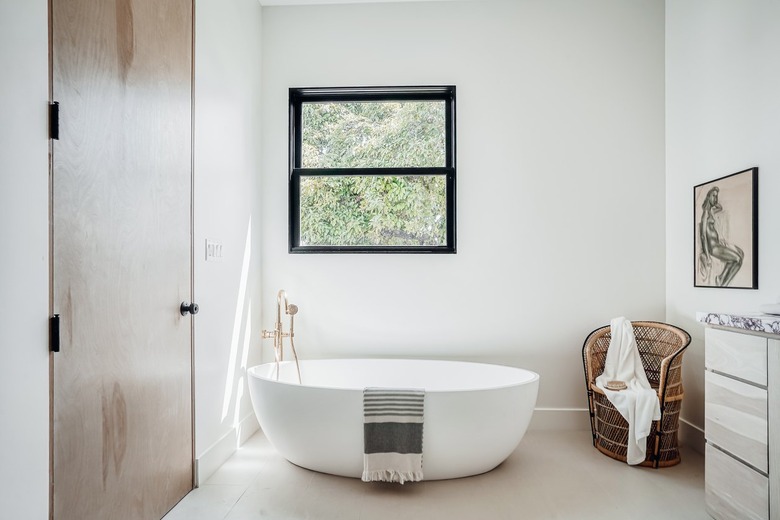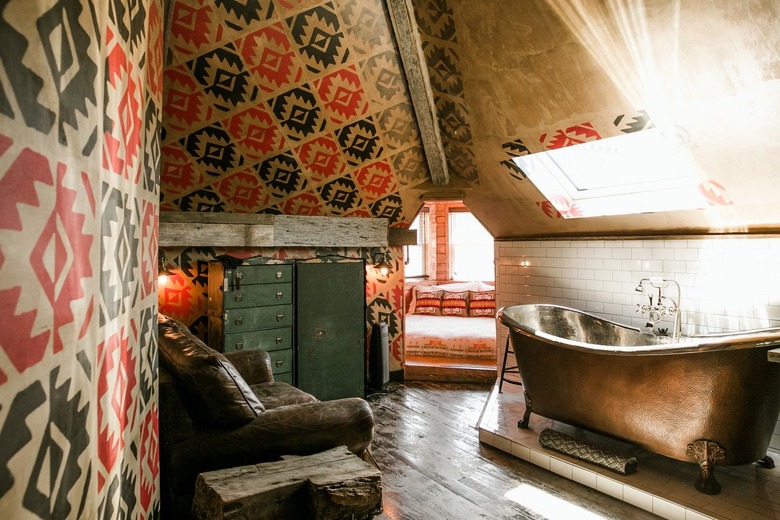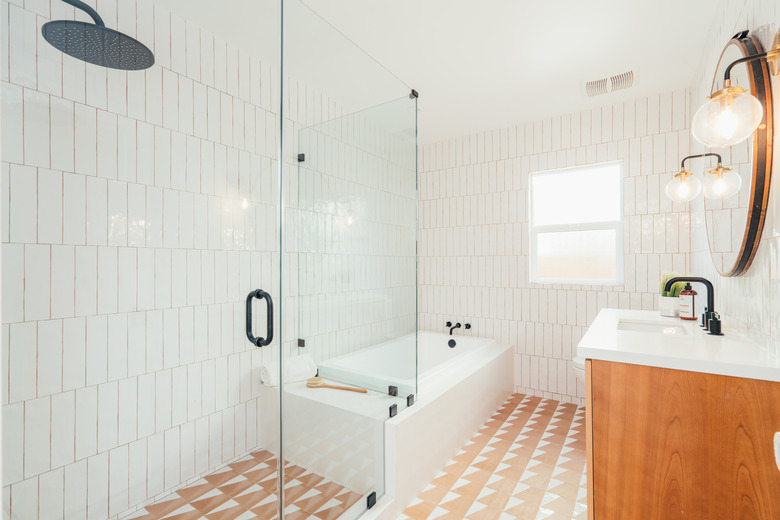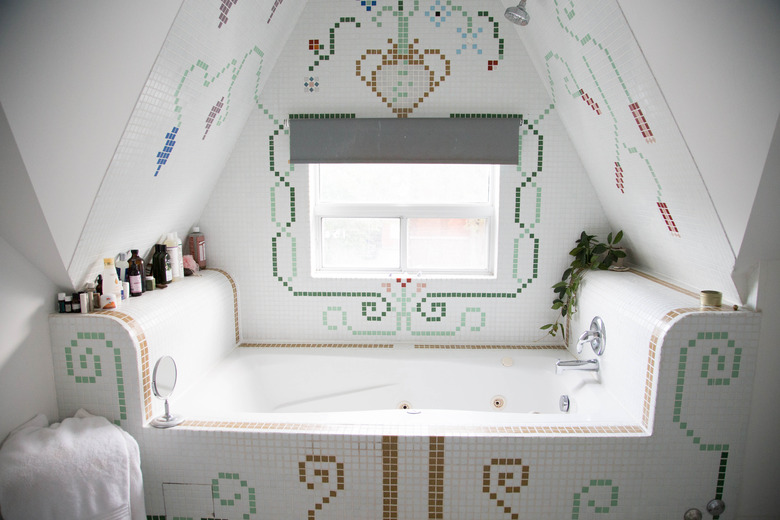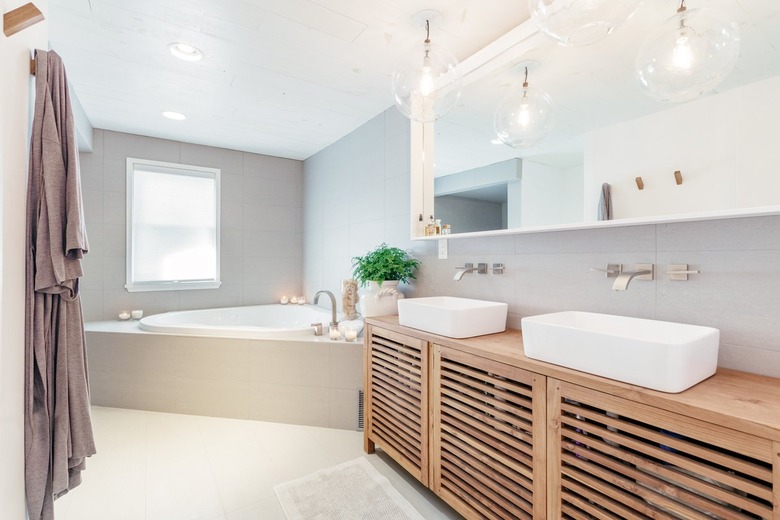Choosing The Right Type Of Bathtub: The 6 Things You Should Think About
We may receive a commission on purchases made from links.
For some people, a tub is simply a space to clean the body, but for others, it represents the ultimate space for relaxation and meditation. If you are ready to buy a new bathtub, take time to do some research before purchasing one so you can bring home the right type of bathtub that you'll truly enjoy soaking in.
Consider not just the size and style of the tub but also the weight, material, installation method, installation costs, and whether you want any specialized features. When you think you've found the right bathtub, be sure to climb into it in the showroom before buying it so you know whether or not it feels comfortable to your body.
1. Bathtub Shapes
1. Bathtub Shapes
The type of bathtub shape you choose will affect how you can stretch out your body while soaking, how it will fit into your bathroom, how much support it provides, and if it will be comfortable for more than one person (assuming it is large enough to accommodate more than one person). It's important to note that the shape generally refers to the exterior shape of the bathtub itself and not the deck around it (known as the surround) or the inner soaking area, though for some tubs, the interior basin is the same size as the exterior. The most common tub shapes include:
- Rectangle: The most common shape of bathtubs since the 1800s, these fit well in almost
any bathroom layout since they can be easily positioned in alcoves, in corners,
or against a wall, or they can be left freestanding. They tend to have a traditional,
timeless look. If you're looking for a walk-in bathtub, be aware that most of
these designs are rectangle-shaped, so your options are somewhat limited. - Oval:
These rounded tubs have a modern look that stands out since they don't neatly
tuck up against the walls. Oval tubs may be freestanding, sunk fully or
partially into the floor, or fitted into a surround, but freestanding tubs are
the most eye-catching since they literally stand out from the rest of the
bathroom. - Circle:
While these tubs may not be as long as the more popular oval tubs, they
typically make up for this fact by having very high sides, providing a deep, upright
bath. Circular tubs add visual interest to a room without taking up much floor
space, but they provide less room to spread out. - Square:
Similar to a rectangular tub except the sides are all equally long, these tubs
are convenient in that they fit neatly against walls or in corners. - Slipper:
This type of tub is oval in shape but has one or two extended ends for the
bather (or bathers) to relax against while soaking. The ergonomic design makes
these very comfortable, and the sloping edges add a dramatic aesthetic appeal. - Hourglass:
When rectangle or oval tubs are curved in at the center, they are known as an
hourglass tub. Like slipper tubs, this design not only adds a little extra visual
appeal but also provides a more ergonomic shape, offering a relaxing place to
rest the arms. - Pentagram:
This shape is typically reserved for corner tubs, maximizing bathing space
while still reducing the overall footprint, making the tub easier to walk around. - Odd Shape: Hearts, asymmetrical shapes, octagons, and others can all leave you
with an eye-catching tub that may also be super comfortable.
2. Common Bathtub Sizes
2. Common Bathtub Sizes
The most common bathtub size is 60 inches long by 30 inches wide. A standard tub allows for only 12 to 14 inches of water to be added before the water reaches the overflow drain. Any tub that fills with more than 14 inches of water to allow an average adult's full body to be covered by water is known as a soaking tub. Most soaking tubs are longer and wider than a standard tub, and many can comfortably fit two adults. When determining the right tub for your bathroom remodel, take into account not just the possible space the tub will occupy but also the size of your doorways to ensure you can actually get the tub into your bathroom.
A Japanese tub is a particular type of soaking tub that is extra deep but has a smaller footprint so the bather sits more upright than he might in a standard bathtub, which is why these tubs are typically equipped with a seat inside. While many people prefer the extra depth of soaking tubs and Japanese tubs, keep in mind that because these may be difficult to get in and out of, they are not the best options for those with mobility issues or for young children.
Standard bathtubs can hold 42 gallons of water, and most people choose to fill the tub with a ratio of two parts hot water to one part cold water, meaning a typical bath requires 28 gallons of hot water. Soaking tubs typically hold 50 to 80 gallons, meaning they'll need 33 to 53 gallons of hot water for a comfortable bathing experience. This means if you're buying a larger than average bathtub, you need to check the capacity of your water heater because you certainly don't want to get the tub of your dreams only to find you don't have enough hot water to fill it.
3. Bathtub Materials
3. Bathtub Materials
Your choice of bathtub material affects the weight of the tub, the price, its durability, and how easy it will be to clean. The most common bathtub materials are fiberglass and acrylic. Fiberglass is lightweight, easy to clean, and inexpensive, but it is not particularly durable and is prone to scratching, cracking, and discoloration. The life span of a fiberglass tub is only around 10 to 15 years. While fiberglass tubs may weigh as little as 50 pounds, most are between 60 and 70 pounds.
Acrylic tubs are very similar to fiberglass tubs and have the same benefits, but they are more expensive (though typically still cheaper than other tubs). On the upside, they are less prone to cracks and discoloration, and since the color is solid all the way through the tub rather than just the surface, deep scratches are less visible. Expect an acrylic bathtub to weigh an average of 75 pounds.
If you're looking for something more durable, you may want to consider enameled steel or cast iron. Enameled steel is a steel bathtub with a porcelain enamel coating. They are reasonably inexpensive, particularly considering how much more durable they are compared to fiberglass or acrylic tubs. On the downside, they cool down fast and are prone to chipping. They tend to weigh about twice as much as fiberglass tubs.
Cast iron bathtubs are also coated with porcelain enamel, but the enamel layer is thicker than it is on steel tubs and does not chip as easily. While they are more durable (there are plenty of Victorian-era tubs still in use) and keep water warmer longer, they are more expensive than steel, and they can weigh quite a lot — anywhere from 350 to 500 pounds — so the floor below the tub must be suitably stout.
For a luxury appearance, many people opt for cast-polymer tubs, which are similar to solid surface countertops and can replicate the look of stones such as marble, granite, or onyx, though they're also sold in solid colors. These tubs are more expensive than acrylic tubs, but they are not as durable since the finish often becomes brittle, which can result in cracking. If you're looking for truly luxurious material, though, consider buying a bathtub made from less common materials, such as concrete, stone, or copper, all of which, like cast iron, last for decades.
When choosing your bathtub material, remember that bathtubs can be heavy, particularly those made from cast iron or stone, and each gallon of water will add an extra 8.3 pounds to your tub when it is filled. This means that while a standard-size fiberglass tub may weigh 65 pounds, it will also hold around 350 pounds of water when full. If a 200-pound adult sits in the tub, that means your floor will need to support 615 pounds of weight in around 12.5 square feet of space — or about 50 pounds per square foot. Since many upstairs floors are only rated to hold 40 pounds of weight, it is critical that you contact a qualified professional (such as a structural engineer, builder, or building inspector) prior to adding a bathtub to ensure your flooring and subflooring can support it.
4. Installation Method
4. Installation Method
Your bathroom's layout affects what type of bathtub you should install. The most common configuration involves alcove tubs, which are placed in a recess between three walls. This is typically the best option if you have a small bathroom or if you want to install a bath/shower combo since this helps limit the spray of a wall-mounted showerhead, and it requires only one set of shower doors or a shower curtain. Alcove bathtubs are designed to have only one finished side since the other sides will be placed against a wall.
Those who have a little more space and want to keep the tub out of the way often find corner bathtubs to be the best option. While the back two sides of a corner tub will be unfinished, the rest are finished since they will be exposed.
If you don't want to have your bathtub installed in an alcove or corner, look for a freestanding bathtub that can be positioned anywhere in your bathroom where your plumbing lines connect. Clawfoot tubs are the best known type of freestanding bathtub. They are supported by four feet and look very traditional. More modern designs typically sit flush on the ground, though many people choose to have them partially or entirely inset into the flooring. Freestanding tubs are very eye catching, but since they're usually designed to be soaking tubs, they aren't always great options for those with mobility issues or young children.
Both drop-in and undermount tubs are made with completely unfinished sides because they are meant to be encased in a surround or fully inset into the floor. The actual bathing area can be set into an alcove, a corner, up against a wall, or even right in the middle of the bathroom. While these types of tubs can allow you a lot more freedom with your bathroom design, they also require a more complex installation since they are not self-supporting. The difference between drop-in and undermount bathtubs is that drop-in tubs leave the rim visible on the top of the surround or flooring, while an undermount tub is installed under the surround wall or floor, creating a more seamless appearance.
5. Cost of Installation
5. Cost of Installation
If you have DIY plumbing experience, you may be able to install your own bathtub, but otherwise, you should hire a professional. This is particularly true if you need to move any of the plumbing lines to accommodate a new drain or faucet position or if your tub has any special features, like jets, speakers, or lighting.
The cost to hire a pro will vary dramatically based on the specific tub and installation method you require. In fact, the price for installation could range anywhere from $100 to $2,000, with the high end of the spectrum covering whirlpool tubs that require the installation of a pump, air switch, and electric timer. If the plumbing needs to be reconfigured, expect to pay an additional $400 to $1,900 depending on how much it needs to be reworked.
Naturally, building a surround for an undermount or drop-in tub will be more expensive than simply fitting a freestanding bathtub in its place. A surround can cost anywhere from $800 to $1,500 depending on the size and materials.
6. Bathtub Enhancements
6. Bathtub Enhancements
For a truly spalike experience, many homeowners want accessories to be installed inside the tub, such as jets, aromatherapy features, speakers, and lighting. It shouldn't be surprising that these extras can be pricey, particularly if you're looking for a tub fitted with all of these gadgets and gizmos. Whirlpool tubs have jets fitted in the walls behind the tub that push water or air around the tub to massage the body and add bubbles to the water, adding an incredible level of relaxation to the bathing experience.
The biggest problems with these types of extras (aside from the high cost) is that they can be difficult to clean and repair. Cleaning jets, for example, requires flushing the tub with strong cleaners and scrubbing the outside of the jets. Repair services can cost $100 to $500 depending on the issue.
References
- Home Decor Bliss: How Much Weight Can A Living Room Floor Hold? [You'll Want To Know This Answer!]
- HomeAdvisor: How Much Does Hot Tub Repair Cost?
- HomeAdvisor: How Much Does It Cost To Replace Or Install A Bathtub?
- Porch: How Much Does It Cost To Install A Bath Surround?
- QualityBath.com: Soaking Tubs: Everything You Need to Know
- QualityBath.com: Shape Up: Everything You Need to Know About Different Tub Shapes
- Better Homes & Gardens: Buying a Bathtub? Here Are the Materials, Types, and Installation Tips You Need to Know
